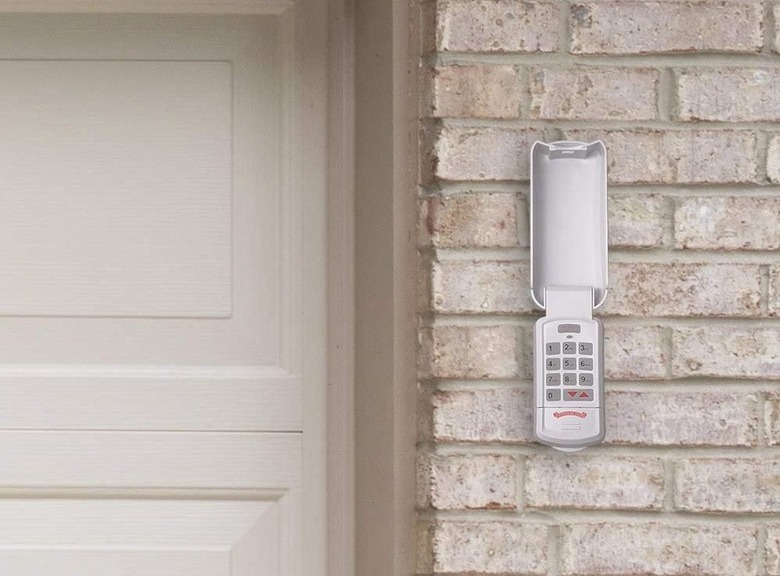Overhead Door Legacy Programming Instructions
We may receive a commission on purchases made from links.
Getting out in the world is about to get a whole lot easier with your Legacy Overhead Door. First, you'll need to program your garage door system so it recognizes your various remote controls and operates the way you like. Programming these things won't be complicated. Pull up a chair in the garage and you'll be done in no time.
Programming Door Travel Limits
Programming Door Travel Limits
This will set the limits for how far up or down your door travels. Say you have a kayak mounted on the ceiling and you want the door to stop a few inches shy of fully opening. This involves setting the "up" limit. If your garage floor is uneven, you may want to set the door's "down" limit so that the door stops as soon as it contacts the higher side of the floor to prevent damage to the door. The motions are exactly the same for programming the door up or down; just reverse it and program with the up or down button respectively.
1. Programming the Down Limit
Press and hold the "down" arrow button. When you're pressing, the long LED will be blue. When you release it, it will flash blue. Press the "down" button until the door fully closes. If necessary, fine-tune the adjustment by pressing the "up" or "down" button as needed.
2. Inspect the Bottom
The weatherstrip should compress slightly against the floor so as to seal beneath the door. Raise the door a bit if it's crushing the seal. If your floor isn't flush or the door is damaged, it may not seal properly, and you'll need to make repairs if that's an issue for you. If weatherstripping is important in your climate, some garage door insulation might help too.
3. Set the Programming
Press and release the "set/prgm" button and both LEDS will flash blue and then turn off. Your down limit is now programmed.
4. Program the Up Limit
To program the "up" limit, simply repeat steps 1, 2, and 3 using the "up" arrow button to raise the door.
Programming the Force Setting and Contact Reverse
Programming the Force Setting and Contact Reverse
There's little programming happening. Instead, you're sort of letting it do a trial run to see where the floor is so it knows when to dial back on force and come to a halt. Your job is to push a button and let it go, and then the opener will self-program what it needs to know.
These force settings are done at the factory; completing this trial run at home sets the final parameters. You'll rarely need to adjust these, but if you do, refer to "maintenance and adjustments" in your owner's manual. If the door is damaged, never adjust the force settings. Instead, perform a monthly contact reverse test. Stay on top of regular maintenance to keep your door in tip-top shape.
To program the force setting, simply press the wall control button to close the door and let it close completely. Next, press the button again so it rises completely to the top. You must do this — closing, then rising — back to back so the settings are automatically recorded.
The contact reverse test is simple. Place a piece of 2x4 under the center of the door and activate the door with the wall control. When the door touches the 2x4, it should stop and reverse within two seconds. The long LED light will flash red until the door completely opens. Deactivate the red light by removing the 2x4 and operating the door again to clear the alert.
Programming Extra Remotes
Programming Extra Remotes
You may need to use multiple remote controls for different drivers in your household, so each one needs to be paired to the opener. Once you start this, you have 30 seconds to complete the programming before the mode toggles off. Remove the protective film from the remote battery before you start to activate the remote you plan to program.
1. Activate the Opener
Press and hold the "set/prgm" button on the opener for two seconds. This will make the round LED light turn blue and then the long LED will flash purple.
2. Pair the Remote
Move 5 feet or more away from the opener. On the remote you're pairing, press the button slowly. Release it, wait one second, and press and then release again. Watch the LED lights on the opener as you press the second time because both LED lights should flash and then turn off.
3. Check Your Work
Test the remote. Press the remote button again and the door should operate accordingly. If you have more remotes to program, do the same thing for each one.
Don't forget that you can always reprogram a remote if it becomes unpaired for some reason.
